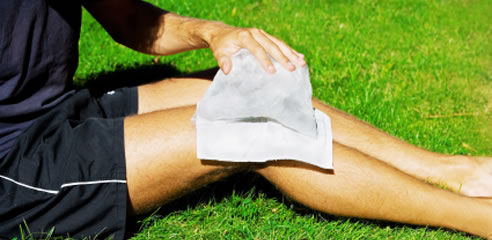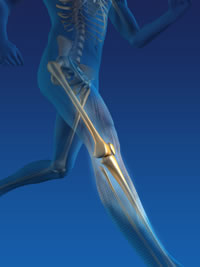
|
|
|
Call our offices at: (310) 274-3481 (800) 964-0404
Beverly Hills
9301 Wilshire Boulevard
Suite 406A
Beverly Hills, California 90210

|
|
 |
|
|
INSURANCE & WORKERS' COMPENSATION
ACCEPTED!
We accept most types of
insurance
providers and specialize in the treatment of
workers' compensation injuries to the hand and upper extremity. |
|
 |
|
Lower Extremity Pain
Piriformis Syndrome
Arthritis Pain of the Hip
Femoral Neuropathy
Baker’s Cyst of the Knee
Phantom Limb Pain
Trochanteric Bursitis
Arthritis Pain of the Knee
Bursitis Syndromes of the Knee
Lower extremity pain is a common complaint among patients with or without previous injury. Often times, pain is the result of conditions affecting the bones, ligaments, joints, tendons, nerves etc with the end result being inflammation of these tissues. Pain in the lower extremity can be very disabling for patients and can often interfere with their daily lives, making getting around very difficult. Described below are common conditions caused by inflammation of tissues or nerves that affect the lower extremity.

Piriformis Syndrome
Piriformis syndrome is characterized by compression of the sciatic nerve by the piriformis muscle as it passes through the sciatic notch located in the pelvic area. Piriformis syndrome initially causes severe pain in the buttocks and can radiate into the lower extremity and foot. The onset of symptoms generally occurs after severe trauma to the gluteal region, overuse or under use of the piriformis muscle, and repetitive pressure on the piriformis muscle and sciatic nerve. Diagnosis of piriformis syndrome is based on the findings from electromyography, plain radiographs of the back, hip, and pelvis, MRI, and clinical presentation. Initial treatment for piriformis syndrome involves a combination of nonsteroidal anti-inflammatory agents and physical therapy. For patients that do not respond to these modalities, injection around the sciatic nerve at the piriformis muscle is the next step in treating piriformis syndrome. It is always advised to consult a pain management specialist for any patient suspect of having piriformis syndrome.
Arthritis Pain of the Hip
Arthritis pain of the hip is a very common and painful condition that is caused by a variety of conditions that cause damage to the hip joint cartilage. Common forms of arthritis that cause hip pain are osteoarthritis, rheumatoid arthritis, and post-traumatic arthritis. Arthritis pain of the hip can also be caused by infection, Lyme disease, and collagen vascular disease. Patients suffering from arthritis pain of the hip complain of localized pain around the hip and upper leg made worse by physical activity characterized as being constant and aching in nature. Some patients also complain of grating or popping of the joint during physical activity and a gradual decrease in functional ability making everyday tasks such as walking and climbing the stairs very difficult. Diagnosis for arthritis pain of the hip is based on the findings from plain radiographs, clinical presentation, and in some cases, an MRI. Treatment for arthritis pain of the hip involves a combination of nonsteroidal anti-inflammatory agents and physical therapy, in some cases, an intra-articular injection of local anesthetic and steroid will be needed. Any patient suspect of having arthritis pain of the hip is advised to seek medical attention.
Femoral Neuropathy
Femoral neuropathy is a condition characterized by damage to the femoral nerve. The damage to the femoral nerve can be caused by compression, trauma, and disease such as diabetes. Patients suffering from femoral neuropathy complain of pain that radiates into the front of the thigh and the mid-calf and is associated with weakness of the quadriceps muscle causing the knee to buckle. The pain associated with femoral neuropathy is said to be moderate to severe and burning in nature. Diagnosis for femoral neuropathy is based on the findings from electromyography, plain radiographs of the spine, hip and pelvis, clinical presentation, and in some cases an MRI. Treatment for femoral neuropathy is dependent of the severity of the case. For patients suffering from a mild case of femoral neuropathy, treatment consists of taking simple analgesics or nonsteroidal anti-inflammatory agents, and physical therapy. For patients suffering from severe cases of femoral neuropathy, injection of the femoral nerve with local anesthetic and steroid may be needed. It is extremely important for any patient suspect of suffering from femoral neuropathy to immediately seek medical attention.
Baker’s Cyst of the Knee
Baker’s cyst of the knee is a condition characterized by the formation of a cyst of fluid located behind the knee. The pain associated with Baker’s cyst of the knee is constant and aching in nature, made worse by fully extending the knee and physical activity. Baker’s cyst of the knee is caused by an abnormal accumulation of synovial fluid from the knee joint, patients suffering from rheumatoid arthritis are more susceptible to developing Baker’s cyst. Treatment of Baker’s cyst of the knee generally requires surgery, however, the use of an elastic bandage and nonsteroidal anti-inflammatory agents are sometimes helpful after proper evaluation by an orthopedic surgeon.
Phantom Limb Pain
Phantom limb pain is a condition characterized by the feeling of pain in the area where a limb has been amputated. Patients suffering from phantom limb pain describe the pain as constant, sharp, burning, and shooting in nature and can be made worse by stimulation or movement of the affected region. Treatment of phantom limb pain can be difficult. Initial treatment begins with the use of medications such as anti-depressants and narcotics, followed by nerve blocks and transcutaneous electrical nerve stimulation. The patients pain management physician will be able to best devise a plan of treatment to relieve the pain and discomfort for sufferers of phantom limb pain.
Trochanteric Bursitis
Trochanteric bursitis is a condition characterized by inflammation of the bursa (fluid filled sac located near a joint) causing pain in the outer hip that can radiate down the thigh. Trochanteric bursitis is a common cause of hip pain and can be made worse by lying on the affected side, pressing on the hip, and physical activity. Trochanteric bursitis is caused by injury from acute trauma or repeated micro-trauma such as falling on the hip, previous hip surgery, and running on soft or uneven surfaces. Treatment for trochanteric bursitis consists of the use of nonsteroidal anti-inflammatory agents, avoiding activity that makes the pain worse, such as running in sand, and in more extreme cases, injection of the trochanteric bursa may be required.
Arthritis Pain of the Knee
 Arthritis pain of the knee is a common painful condition caused by the development of arthritis by a variety of conditions that have the ability to damage the knee joint cartilage. The pain from arthritis pain of the knee is described as constant and aching in nature, made worse by physical activity. Treatment for arthritis pain of the knee includes a combination of nonsteroidal anti-inflammatory agents and physical therapy, and in more extreme cases an intra-articular steroid injection may be required.
Arthritis pain of the knee is a common painful condition caused by the development of arthritis by a variety of conditions that have the ability to damage the knee joint cartilage. The pain from arthritis pain of the knee is described as constant and aching in nature, made worse by physical activity. Treatment for arthritis pain of the knee includes a combination of nonsteroidal anti-inflammatory agents and physical therapy, and in more extreme cases an intra-articular steroid injection may be required.
Bursitis Syndromes of the Knee
Bursitis syndromes of the knee are characterized by inflammation of the bursa (fluid filled sac located near a joint). The knee joint has four main bursa surrounding the joint: suprapatellar bursa, prepatellar bursa, superficial infrapatellar bursa, and pes anserine bursa, all of which are susceptible to injury causing bursitis. The suprapatellar bursa is located above the patella (knee cap) under the quadriceps muscle. The prepatellar bursa is located on top of the patella under the skin. The superficial infrapatellar bursa is located just under the patella and ligamentum patellae. The pes anserine bursa is located on the lower inner side of the knee. Bursitis syndromes of the knee occur due to direct trauma to the bursa by falls or blows directly to the knee, fractures, and overuse injuries such as running on soft, uneven surfaces or crawling on the knees. The pain associated with bursitis syndromes of the knee is pain and swelling in the associated area of the knee as well as a sharp, catching sensation with range of motion of the knee. Specifically, the pain associated with pes anserine bursitis is constant and aching in nature. Treatment for bursitis syndromes of the knee include a combination of nonsteroidal anti-inflammatory agents, physical therapy, a knee brace to prevent further trauma, and in more severe cases, injection of the affected bursa may be required.

Top of the Page |
|